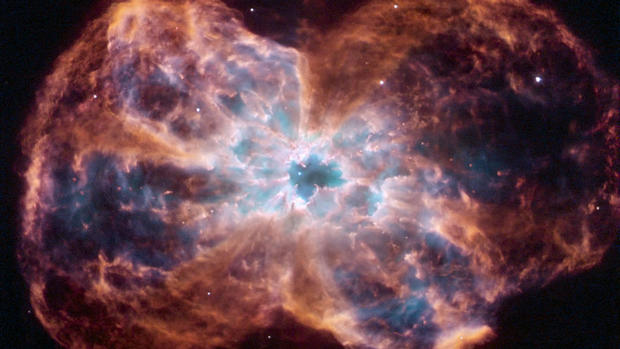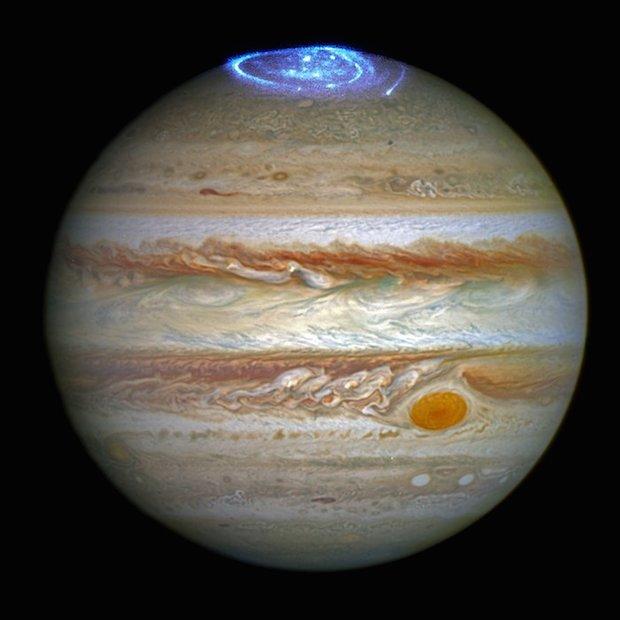Juno probe on course for Jupiter encounter
With transmission of a final set of commands Thursday, NASA's Juno probe is quickly closing in on Jupiter, on its own as it accelerates in the relentless grip of the giant planet's gravity, reaching a record velocity of some 165,000 mph before a critical 35-minute rocket firing July 4 to slow down enough to slip into orbit.
With its flight computer and other sensitive electronics shielded inside a titanium vault to protect them from intense radiation, Juno's main engine is scheduled to fire at 11:18 p.m. EDT (GMT-4; Earth-receive time) Monday, slowing the spacecraft by about 1,212 mph -- just enough to allow the planet's gravity to bend its trajectory into the required polar orbit.
"A couple of days ago, we pressurized the whole system so that the engine is ready to go, all the pipes and valves are all ready," said Ed Hirst, Juno mission manager. "Today, we're sending the last commands up to the spacecraft and once those commands are sent, it'll be hands off from the team here on the ground."
Engineers will continue to monitor the trajectory and the health of Juno's systems, but at Jupiter's distance from Earth -- 540 million miles -- it will take radio signals 48 minutes and 19 seconds to reach flight controllers at NASA's Jet Propulsion Laboratory in Pasadena, Calif.
By the time they receive signals confirming the start of the 35-minute Jupiter orbit insertion burn Monday night, it will all be over, one way or the other.
"We'll continue to monitor the spacecraft and make sure everything is executing as we expect it to execute, but the spacecraft is on its own," Hirst said. "It's designed to take care of itself."
Protective software is on board to quickly restart the engine if the flight computer detects a fault of some sort that otherwise might cause the spacecraft to shut down and await corrective action from Earth.
Even so, it promises to be a very long 35 minutes for Scott Bolton, the principal investigator at the Southwest Research Institute.
"I have mixed emotions," he told reporters Thursday. "I'm excited and with anticipation, of course, because we're finally arriving, but I also have tension and nervousness because there's a lot riding on what happens July 4.
"We have to perform this critical maneuver, the rocket motor has to burn at just the right time, in the right direction, at the right moment for the right amount of time, for us to get into orbit."
Adding to the drama, the spacecraft will be coming in over the north pole of Jupiter and flying through a seething magnetic field that traps and accelerates charged particles from the sun to near light speed.
The result is a deadly storm of radiation roughly equivalent to 20 million rads, or 100 million dental X-rays in one year. And Juno will be flying into that never-before-experienced environment for the first time when it has to execute "this complicated, delicate maneuver," Bolton said.
If the rocket firing doesn't happen for some reason, or if it is shorter than about 20 minutes, the $1.1 billion mission will be lost.
"It's all automated," Bolton added, "the spacecraft's a smart robot, we've tested everything. But still, everything's riding on it."
Juno is designed to remotely probe Jupiter's hidden interior, it's intense magnetic field, its auroral displays and to search for sign's of oxygen, a telltale indicator of how much ice might have contributed to the planet's formation 4.6 billion years ago and where in the solar system the planet might have originally formed.
The mission is expected to shed light on whether Jupiter has a rocky, compressed core beneath a thick layer of liquid metallic hydrogen and answer fundamental questions about the nature of the dynamo believed to be powering the magnetic field.
Along with a suite of science instruments, Juno also features a public outreach camera called JunoCam that will take spectacular images of the giant planet from just above the cloud tops.
Bolton showed off a long-range JunoCam shot of Jupiter Thursday, showing the planet with just one side illuminated, its Great Red Spot and three of its four bright Galilean moons -- Io, Europa and Ganymede.
"The whole team is thrilled, we're really getting there," Bolton said. "We're about to jump on that Jupiter train."



